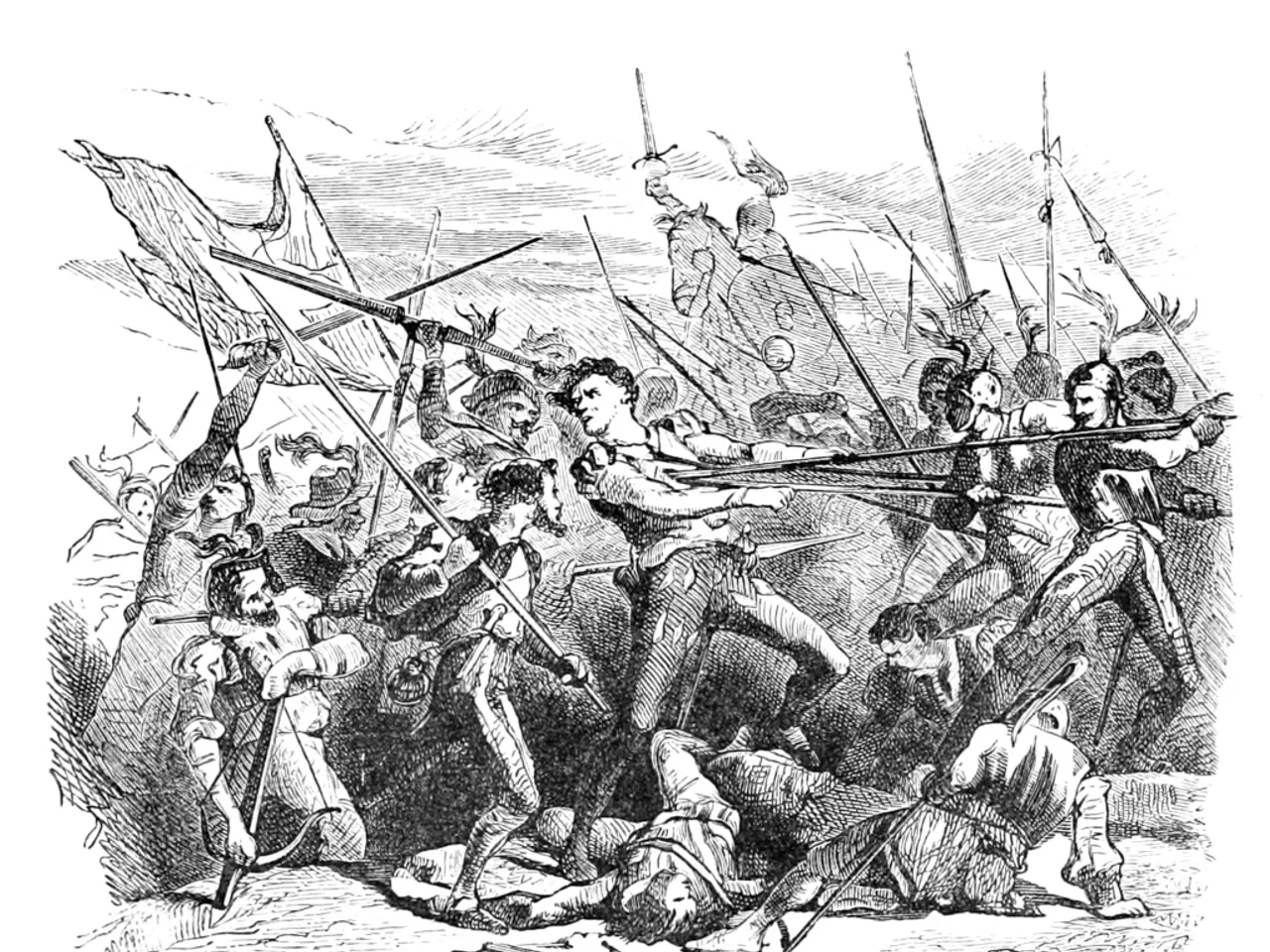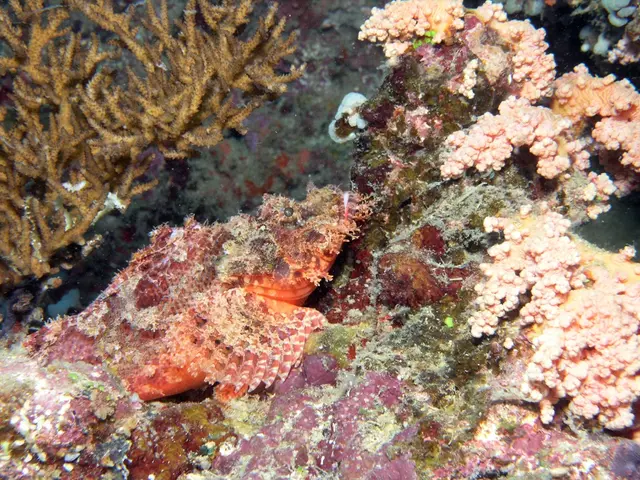Defense Mechanism Transformation: A Psychological Strategy
Reaction formation is a fascinating psychological defense mechanism that allows individuals to unconsciously replace unwanted, threatening, or anxiety-provoking impulses with their opposites in conscious awareness[1][2][5]. This means that people may behave in ways contrary to their genuine feelings or desires in order to protect themselves from internal conflict or distress.
### Examples of Reaction Formation
A classic example is a mother who harbors unconscious feelings of resentment towards an unwanted child, who may become excessively overprotective and caring to mask those negative feelings and convince herself and others that she is a good mother[1]. Another example is concealing anger or hatred with exaggerated kindness; someone feeling hostile within may act overly friendly, polite, or caring towards the person they actually dislike[2].
A person feeling intellectually insecure might behave in an overly confident or arrogant way to hide their true feelings of inadequacy[5]. Teasing or bothering someone they secretly admire or fear can also be an expression of reaction formation, where the outward behavior contradicts underlying emotions[2].
### Impact on Behavior
The individual expresses behaviors that are diametrically opposed to their true feelings, which can create confusion both internally and in social interactions. This can lead to rigidity in emotional expression, as the person may be unable to acknowledge or process genuine feelings like anger, fear, or insecurity[3]. It often results in overcompensation, where actions or attitudes are exaggerated to conceal unacceptable impulses or desires.
### Impact on Psychological Development
Reaction formation can temporarily reduce anxiety and internal conflict, serving as a protective psychological buffer. However, if overused or rigidly relied upon, it can hinder emotional growth by preventing authentic recognition and integration of one’s feelings. It may contribute to shame and self-alienation, as the individual denies parts of themselves and may feel guilt or confusion about their true emotions[4].
Long-term reliance on reaction formation can result in strained relationships, as others may sense the inauthenticity or inconsistency between expressed behavior and underlying feelings. Therapeutic interventions often aim to increase self-awareness, reduce shame, and promote compassion, helping individuals recognize and accept their conflicted or “taboo” emotions, thus weakening reliance on reaction formation[4].
In summary, reaction formation causes individuals to outwardly express attitudes or behaviors opposite to their unconscious impulses, which protects the ego from anxiety but may impede authentic emotional development and interpersonal honesty if excessively used[1][2][4][5]. It can also be used to protect self-esteem by presenting a socially acceptable facade. Examples of reaction formation include excessive kindness, overzealous moral crusading, and exaggerated cleanliness and orderliness.
Reaction formation is a complex and intriguing aspect of human psychology, first discussed by Sigmund Freud in his works "The Ego and the Id" (1923) and "Inhibitions, Symptoms and Anxiety" (1926). Anna Freud further developed and systematized the theory of defense mechanisms, including reaction formation, in her 1936 book "The Ego and the Mechanisms of Defence." Understanding reaction formation can help individuals better understand their own behavior and emotions, leading to healthier relationships and personal growth.
[1] American Psychological Association. (n.d.). Reaction formation. Retrieved October 17, 2022, from https://dictionary.apa.org/reaction-formation [2] GoodTherapy.org. (n.d.). Reaction Formation. Retrieved October 17, 2022, from https://www.goodtherapy.org/learn-about-therapy/issues/reaction-formation [3] Mayo Clinic. (2021, August 27). Psychological defense mechanisms. Retrieved October 17, 2022, from https://www.mayoclinic.org/diseases-conditions/stress/in-depth/psychological-defense-mechanisms/art-20048146 [4] National Institute of Mental Health. (n.d.). Psychological Defenses. Retrieved October 17, 2022, from https://www.nimh.nih.gov/health/topics/psychological-defenses/index.shtml [5] Psychology Today. (n.d.). Reaction Formation. Retrieved October 17, 2022, from https://www.psychologytoday.com/us/basics/reaction-formation
- Research in social psychology has revealed that reaction formation, a psychological defense mechanism, serves to replace unwanted feelings with their opposites to alleviate stress and anxiety.
- Child development studies demonstrate that a child may exhibit excessive cleanliness or orderliness as a form of reaction formation to unacceptable impulses or desires, particularly in the presence of society's expectations.
- Reaction formation can lead to strained relationships, as others may sense the inauthenticity in the individual's behavior, which contradicts their genuine emotions and thoughts.
- Understanding reaction formation is crucial for mental health, as it can provide valuable insights into an individual's emotions, personality, and relationships during adulthood.
- Experiments in psychology have shown that when someone feelings of inadequacy arise, they might behave in an overly confident or arrogant manner as a means of masks their true feelings.
- Self-esteem can be protected through reaction formation, as people tend to present a socially acceptable facade of kindness, friendliness, or moral crusading to hide underlying feelings of anger or hatred.
- Perception experiments have revealed that an individual experiencing anxiety-provoking thoughts may engage in reaction formation, expressing attitudes or behaviors diametrically opposite to their true impulses to alleviate distress.
- In the realm of mental health and wellness, therapeutic interventions strive to increase self-awareness, reduce shame, and promote compassion, allowing individuals to recognize and accept their emotions and weaken reliance on reaction formation.
- In the context of a person's development, exposure to reaction formation in relationships may heighten feelings of confusion and inconsistency in social interactions, affecting self-esteem and mental health.
- Sophisticated defense mechanisms, such as reaction formation, are essential to a comprehensive understanding of human behavior and motivation, as they contribute to an individual's overall personality and emotional health.
- During therapy sessions, mental health professionals may discuss the impact of reaction formation on behavior and development, helping individuals better understand their emotions and find healthier ways to cope with stress and anxiety.
- Disorders such as obsessive-compulsive disorder may involve a reliance on reaction formation, where theCompulsive need for cleanliness, orderliness, or moral rectitude can serve as a protective measure against unconscious impulses or feelings of dirtiness, chaos, or immorality.
- The insights gained through research in psychology have far-reaching implications for our understanding of human emotions, behavior, and relationships, ultimately contributing to the improvement of mental health and overall well-being within society.




